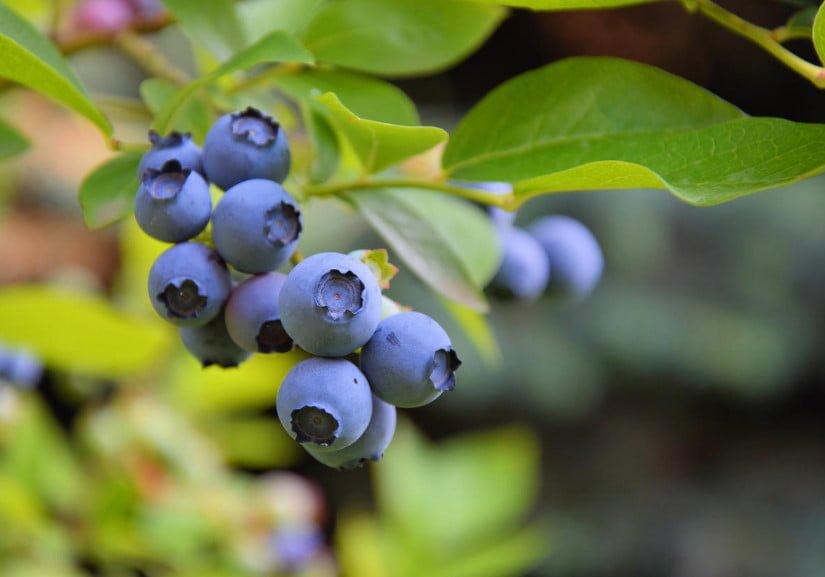
- Differences forest and garden blueberries;
- Vaccinium uliginosum;
- Vaccinium corymbosum;
- Characteristics of growing garden blueberry;
- Planting blueberries;
- Care for blueberries;
- Loosening and weeding;
- Irrigation;
- The level of acidity of the soil;
- Additional fertilizing;
- How to understand what blueberries are missing;
- Diseases of blueberries;
- Pruning blueberries;
- Harvest;
- Shelter for the winter;
- Reproduction of blueberry;
- Which variety to choose;
Blueberries are good on all sides: and tasty, and useful. In berries, in addition to sugar and proteins, there are ascorbic, malic, citric, acetic and oxalic acids, as well as many vitamins and mineral salts. It is not surprising that many gardeners want to grow it on their plots.
In this article I will talk about the differences between forest and garden blueberries, the subtleties of planting and care, popular varieties.
Differences forest and garden blueberries
Blueberries are a genus of plants related to blueberries, including stunted (0.3-1 m) and tall (1.8-2 m and more) forms. There are two main types:
- blueberries, common;
- blueberries tall.
Vaccinium uliginosum
Highly branched perennial shrub of the family Ericaceae height 30-50 cm (in nature) and 0.7-1 m (varieties). It prefers to grow on acidic soils of peat bogs, in damp coniferous and deciduous forests. Very unpretentious, quite easy to adapt to different climatic conditions.
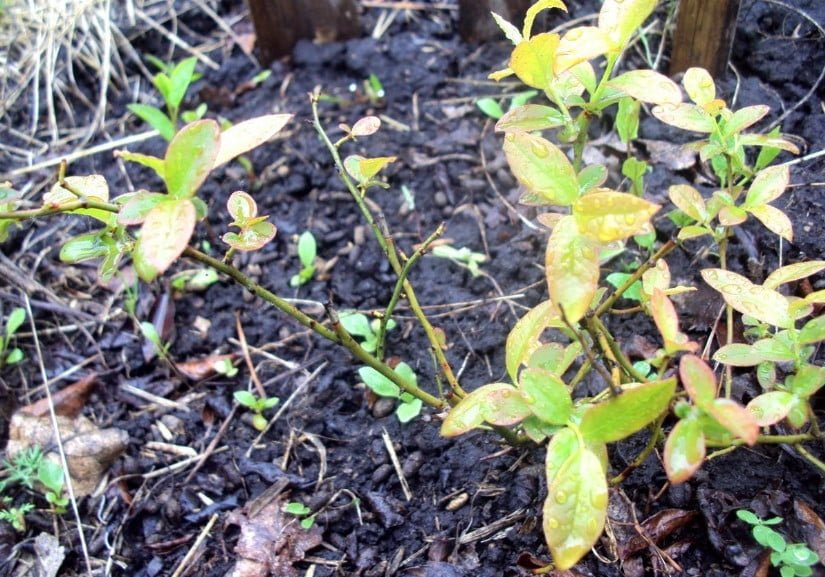
Fruits for 70-80 years, yields from 0.2 to 1 kg per Bush. At the end of may — June on last year’s shoots formed drooping bell-shaped flowers, and a month and a half — blue berries up to 10 mm in diameter. In nature, usually propagated by seeds.
Vaccinium corymbosum
Kind of an ordinary blueberry. Her homeland is North America. Grows in wet swampy areas, usually reaches 1.5 – 2 m in height and 1.5-2.5 m in width.

Flowering shrub in late may, and very sweet berries begin to keep up in mid-July, August or September. Berries ripen unevenly, so the harvest takes place in stages. The yield per plant is about 3-7 kg. In the garden berries blueberries (compared to forest) less vitamins.
Vaccinium corymbosum is different from Vaccinium uliginosum:
- the early fruiting: fruiting occurs approximately 4-5 years to 8-10 — achieves maximum productivity, continuing for about 30 years;
- the berries are larger (10-25 mm);
- more thermophilic;
- does not tolerate flooding of roots and prolonged drought;
- at temperatures below -25 °C…-28 °C branches often freeze, but the bushes quickly restored.
Characteristics of growing garden blueberry
Blueberries can not tolerate the close occurrence of groundwater. For the full development it requires a well-drained water-permeable acidic or slightly acidic soil-at another level of acidity, the growth and development of plants will be significantly reduced.
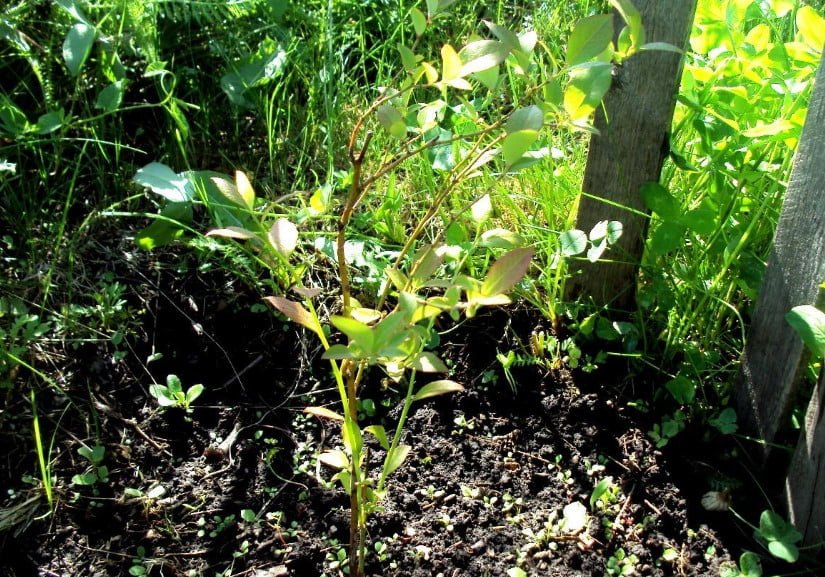
If the earth is clay, then the plant needs to provide drainage or to plant it on a hill as from an excess of moisture roots can rot. For the same reason I can’t plant a garden blueberries in the lowlands, where it happens the stagnant water.
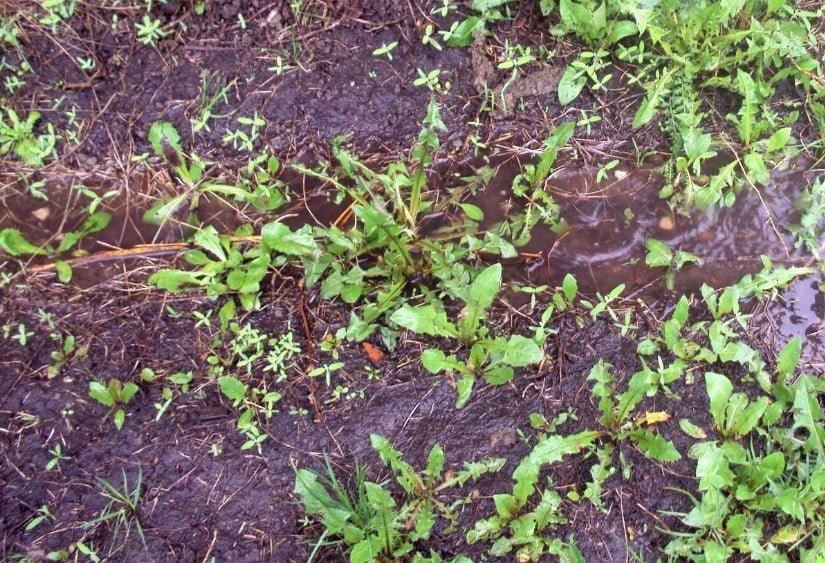
For planting blueberries choose protected from the Northern winds of the site, located on a well-lit place, without shading from the trees growing nearby or buildings.

The ideal would be a place where for a long time did not grow other shrubs or trees.
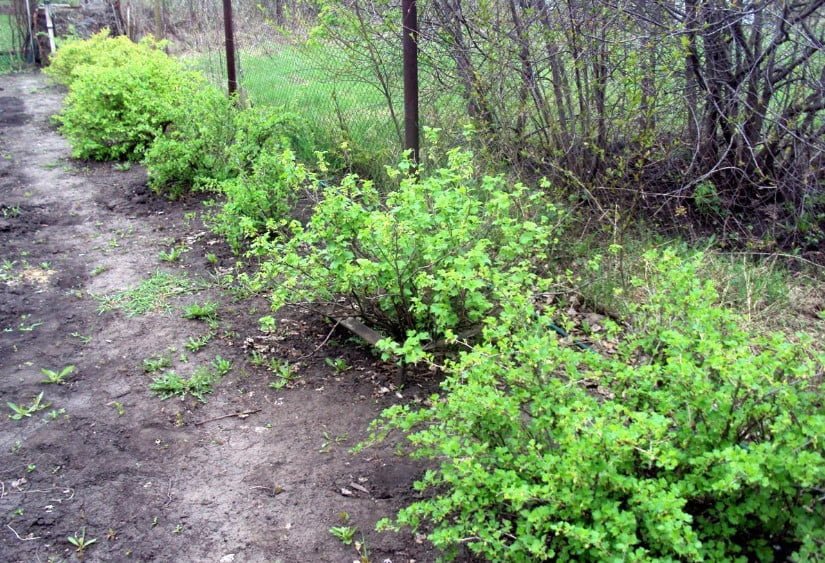
For planting, it is desirable to purchase 2-3-year-old seedlings, and planting on a plot of several varieties contributes to better pollination and fruiting, improves the quality of berries.
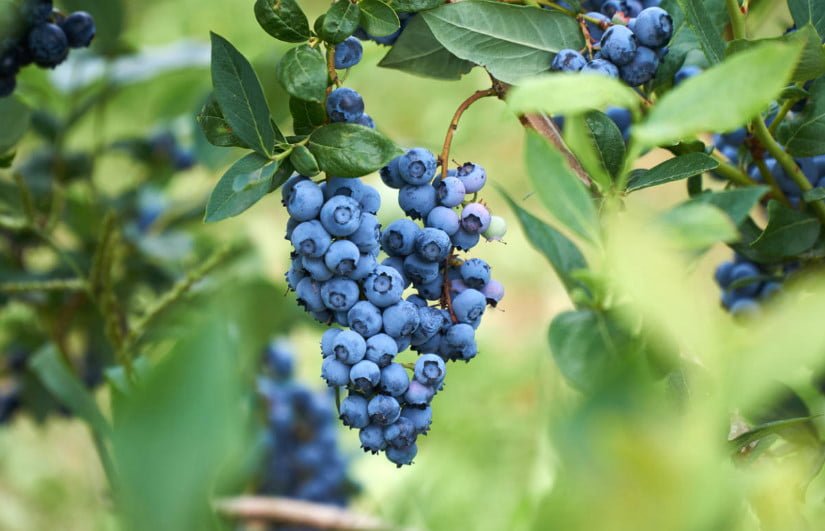
In advance prepare landing holes in the size about 40-50 cm in depth and 50-60 cm in diameter. The distance between the bushes kept on average from 1 to 1.5 m or more.
Planting blueberries
- Before planting, the roots of seedlings should be placed in water for 10-20 minutes.
- The pit is filled with acidic peat, foliage, crushed bark, sawdust, for acidification, you can add sulfur, citric, acetic or malic acid.
- When planting seedlings roots straighten.
- The root neck is buried at 5 cm.
- When planting, no additional fertilizers are applied.
- After planting and watering holes around each Bush mulch crushed pine bark, leaves, needles or sawdust.
Care for blueberries
Care is loosening the soil, weeding and fertilizing, proper pruning, shelter bushes for the winter.
Loosening and weeding
After planting blueberries necessarily carried out regular surface loosening, which helps the soil to breathe well,and weeding around the Bush.
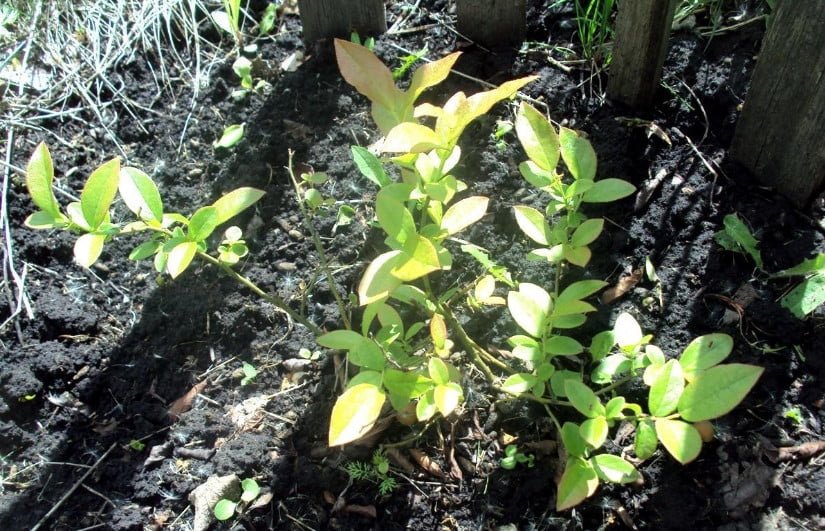
The soil is also loosened before watering the plants.
Irrigation
Blueberries-water-loving plant. Within a few weeks after planting, it is abundantly watered 2 times a week in the morning or evening, 5-7 liters per Bush, preventing both drying of the soil and stagnant water. In the future, mandatory watering once a week.
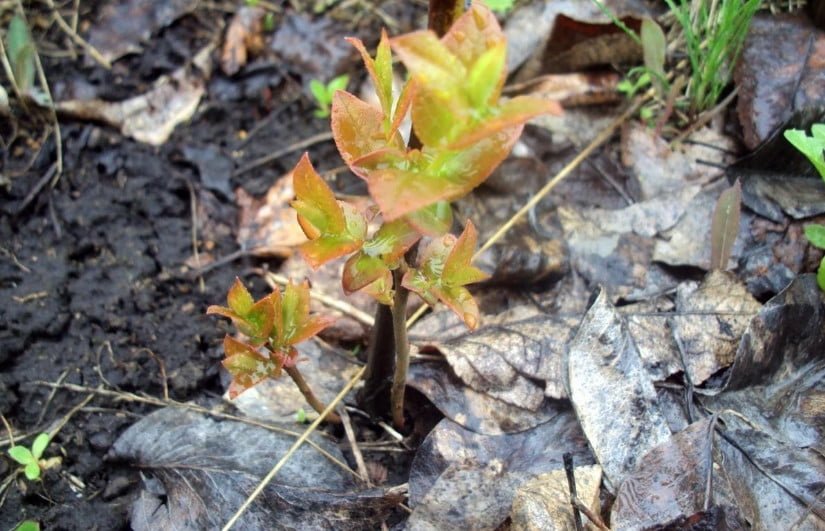
For adult plants, the irrigation rate is increased to 10 liters per Bush, and in heat and drought — double, it will be useful and irrigation of the crown. In case of regular rains, watering does not stop.
After watering, the wells are mulched with sawdust, bark, needles or fallen leaves.
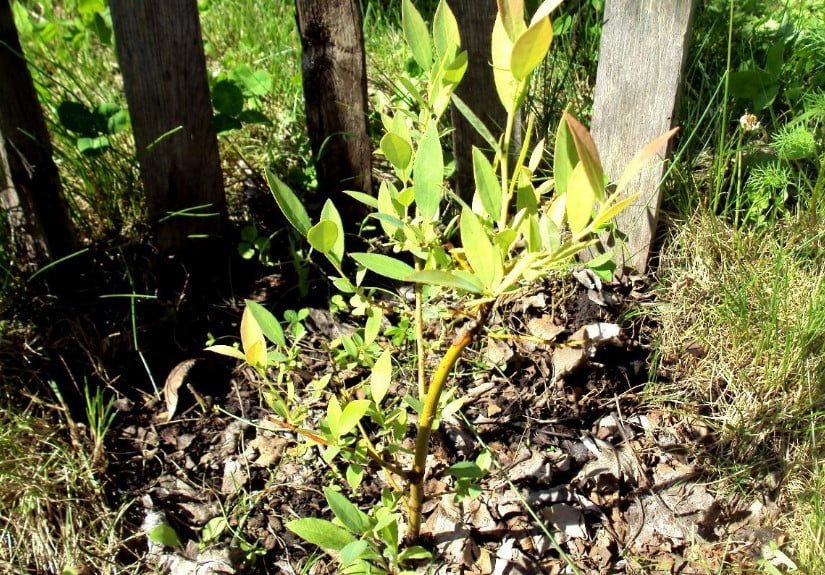
In periods of spring growth and fruiting, to provide blueberries with nitrogen, watering can be combined with fertilizing, spreading a tablespoon of ammonium sulfate in a bucket of water.
The level of acidity of the soil
It can be determined using a special acidity control kit or pH tester. To acidify the soil, blueberry bushes are watered twice a year with a solution: 2 teaspoons of citric, malic or oxalic acid, or 100 ml of 9% table vinegar are added to a bucket of water.
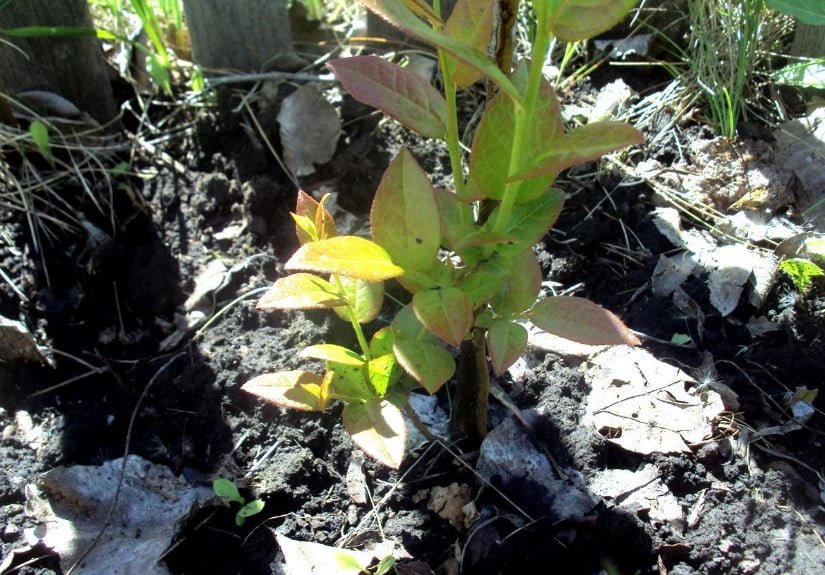
You can also make an additional Bush 10-20 cm of sour peat.
Additional fertilizing
Organic fertilizers do not feed the blueberries! From the second year of cultivation, before the swelling of the kidneys and during flowering, begin mineral fertilizing.
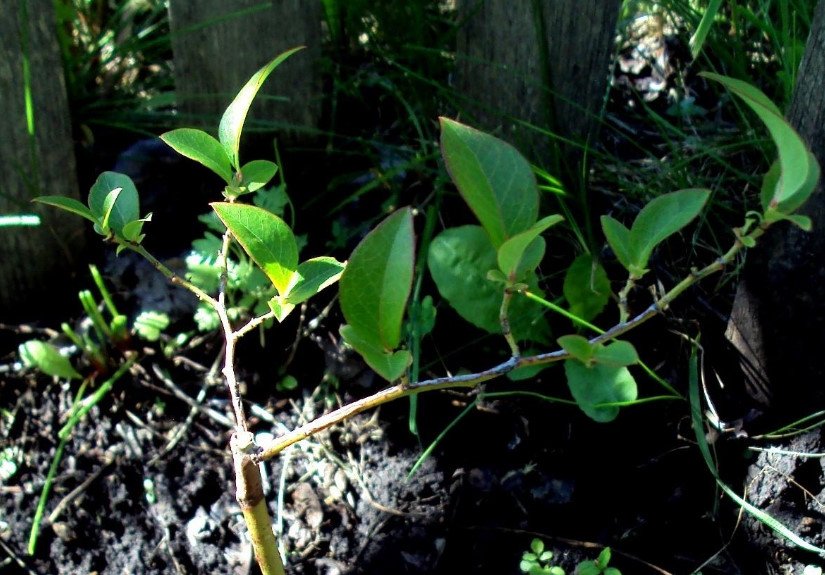
For the first time — one tablespoon of finished fertilizer; in subsequent years, the rate is doubled every time, and from 5-6 years left fixed.
How to understand what blueberries are missing
The lack of various mineral elements can be judged by the following features:
- yellowish leaves and weak growth, lack of nitrogen;
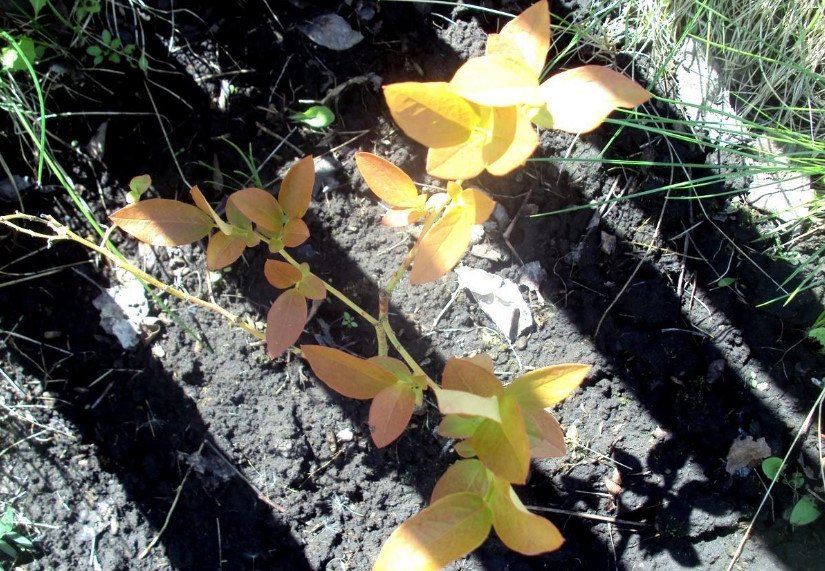
- spots on leaves, blackening and partial dying — lack of potassium;
- deformation of leaves-lack of calcium;
- redness of the edges of leaves magnesium deficiency;
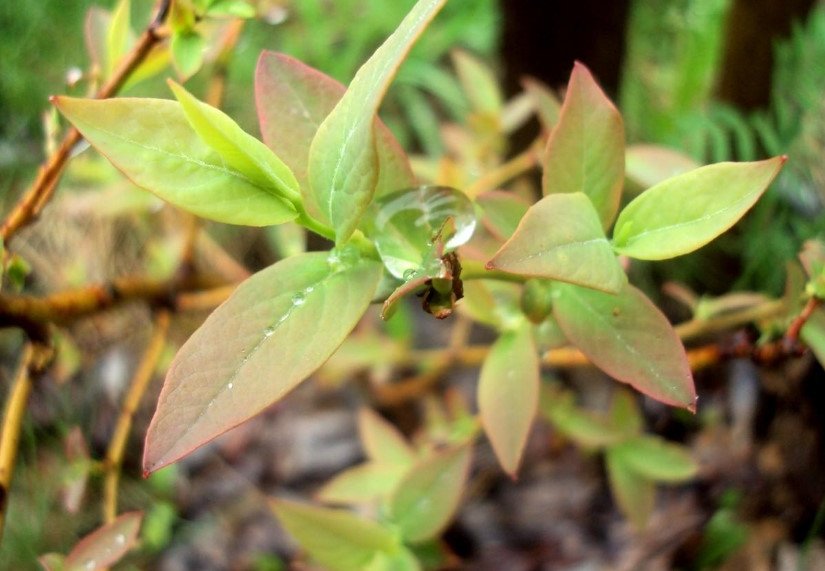
- purple color of leaves pressed to the branch – lack of phosphorus;
- green veins with yellow leaf color-lack of iron;
- white or white-yellow color of leaves – lack of sulfur;
- yellowing leaves-lack of boron.
Fill the lack of a particular element can be using a complex of fertilizers. You can also use a special fertilizer for blueberries.
Diseases of blueberries
All varieties of blueberries are subject to various diseases, can be affected by gray rot, stem cancer, late blight and others. To prevent the development of the disease and the possible death of the plant, the spring is treated with fungicides.
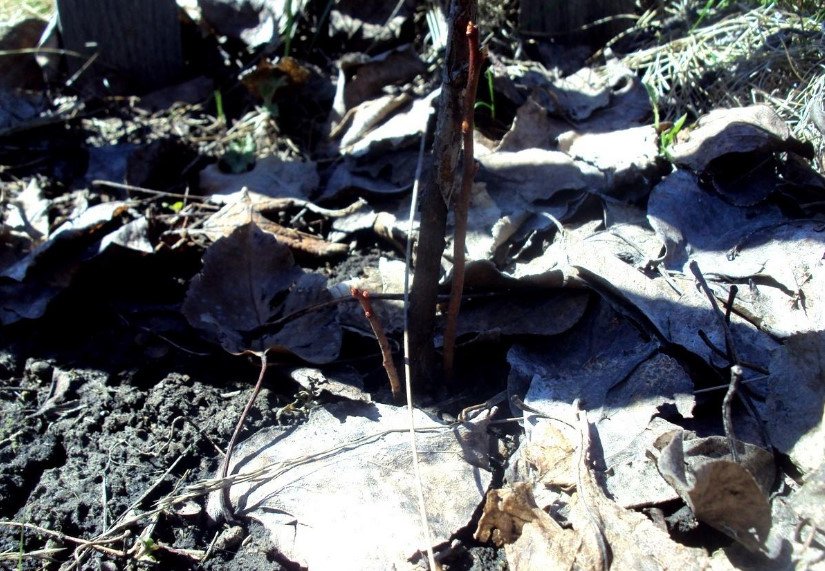
One of the most common diseases of blueberries — stem cancer. The symptom of the disease — the appearance of red spots on the leaves and stems. In order to prevent early spring and late autumn, treatment with Bordeaux liquid is carried out. Sick plant is recommended to destroy.
Pruning blueberries
It is carried out in early spring, starting from the second year after planting, or at the age of 3-4 years. The first crop is intended for the formation: the adult plant is strong enough 5-8 shoots. Starting from the age of 6, the bushes will need rejuvenating pruning to maintain high yields.
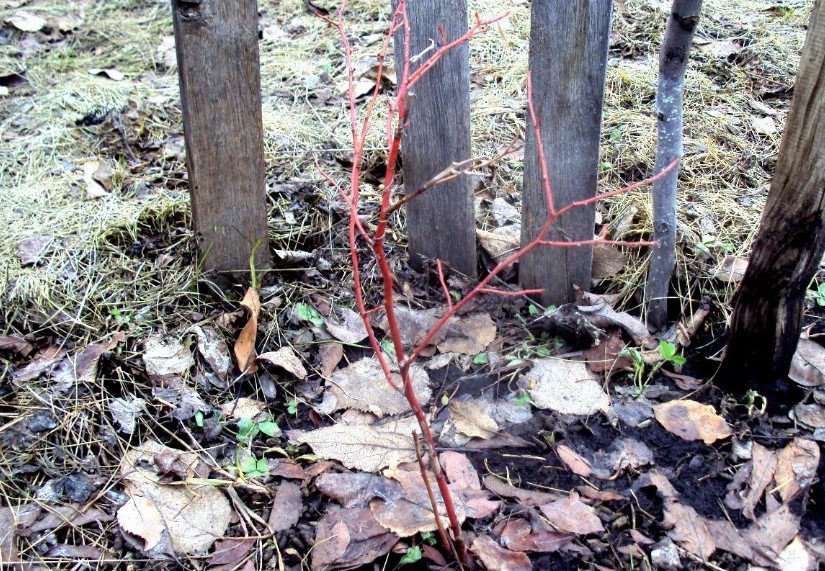
In autumn it is possible to carry out preventive pruning.
Harvest
Harvest time depends on the variety:
- berries early ripening varieties begin to collect from mid-July;
- mid-maturing – early August;
- late-maturing-in September.

Maturation is uneven, so the harvest on one Bush is delayed for several weeks. Ripe berries are separated from the brush easily, and the fruits of the first two collections are the largest and most delicious, it is desirable to eat them fresh.
Shelter for the winter
Tall garden blueberries are quite hardy: depending on varieties capable of withstanding temperatures of -25 °C…-28 °C and below.
Serious damage can be caused to plants in frosty winters with sudden changes in temperature or little snow.
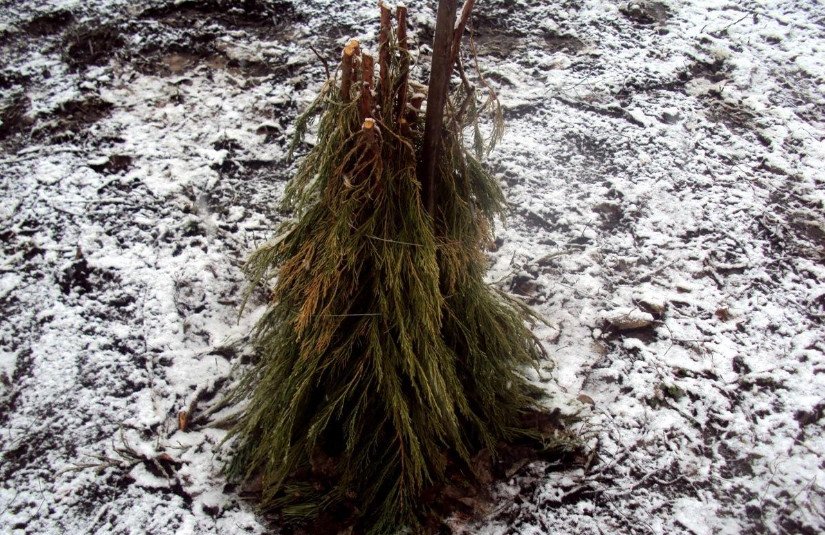
To protect from freezing or death of the above-ground part, the bushes need to cover with non-woven materials, pre-tied shoots fir twigs, or bending them to the ground and putting fir twigs on top.
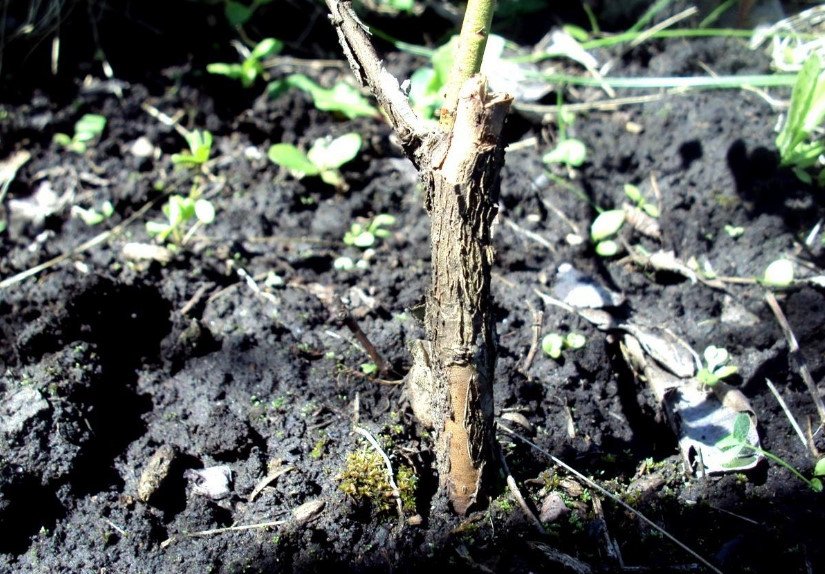
Spring frosts are not terrible for the plant: flowering blueberries can tolerate up to -7 °C without much damage.
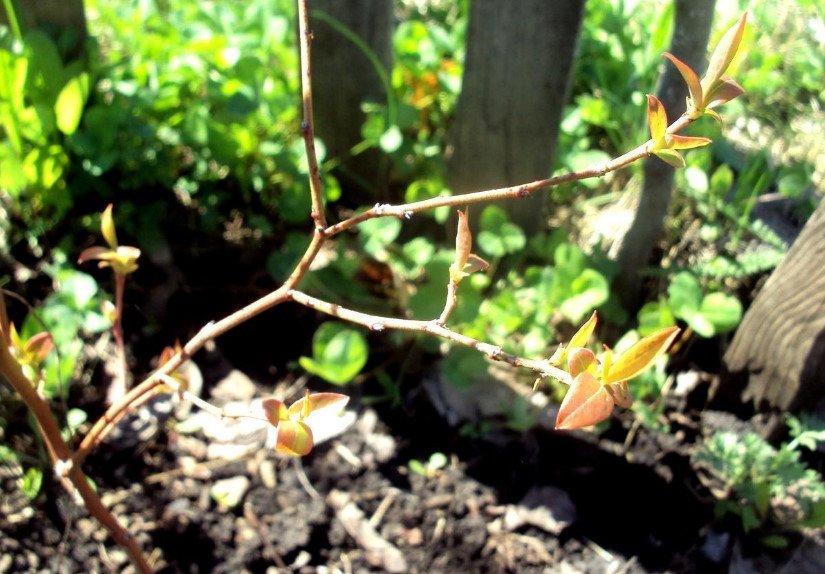
Reproduction of blueberry
Garden blueberries can be propagated in three ways:
Seeds — a very long and difficult way in which a full harvest can be expected not earlier than 10 years. Seeds are taken from fully ripe berries, dried, sown in a shallow trench. After 1-2 years, the seedlings are planted in a permanent place.
Cuttings-they are harvested in late autumn. Next-on the principle of grapes.
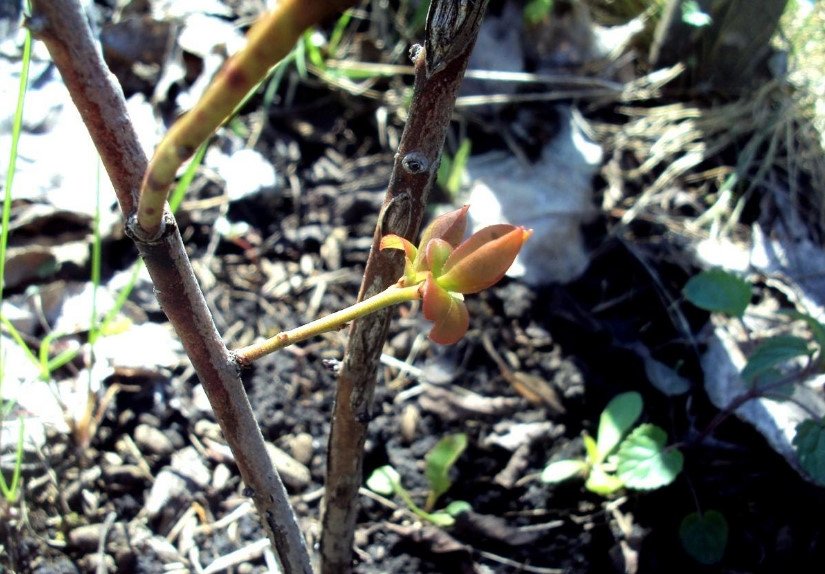
Root cuttings-from the parent Bush separate the stalk, place it in the sand, store in a cool place. After 1-2 years, a seedling is obtained, the harvest on which can be expected the next year after planting in the open ground.
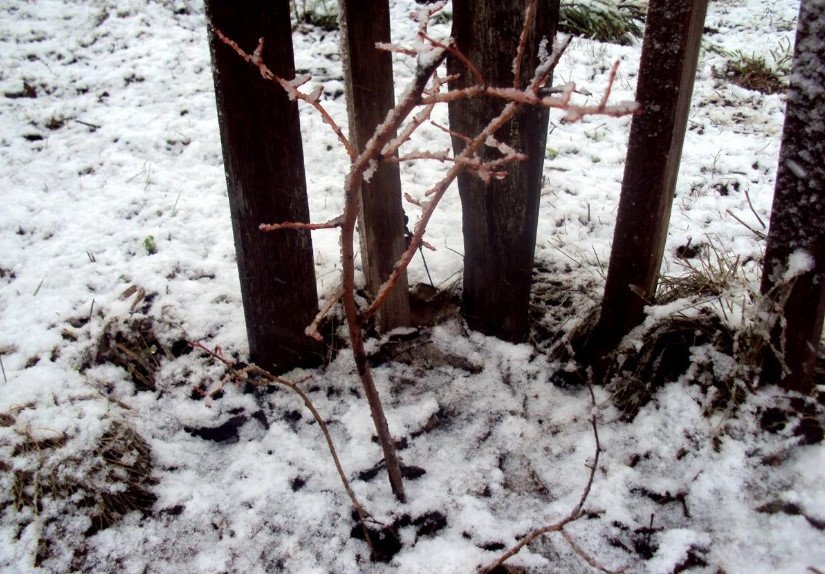
Layering in spring or summer, the branch bends to the ground, some of it sprinkled the ground for the formation of its root system. The following year, the seedling is separated from the parent plant and planted in a permanent place.
Which variety to choose
There are many varieties of blueberries, and each in its own good. When choosing, be sure to consider the characteristics of the variety and the climatic conditions of your region. As a rule, the most enduring and least capricious varieties are recommended for planting.
If your band is often observed snowy winters or severe temperature changes, give preference to short and medium-sized (0.6-1.2 m) varieties that can withstand temperatures down to -34 °C…-40 °C.
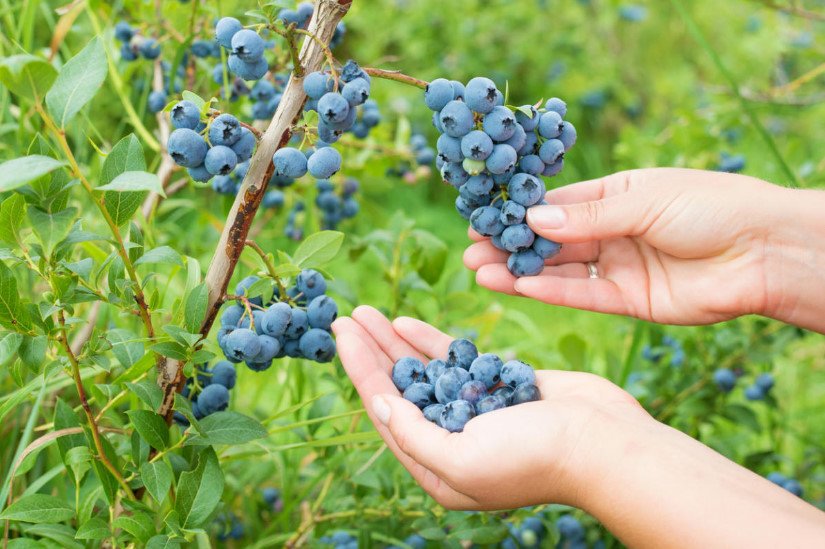
From dwarf varieties to select:
- ‘Northland‘;
- ‘Norhblue‘;
- ‘North Sountry‘ and several others.
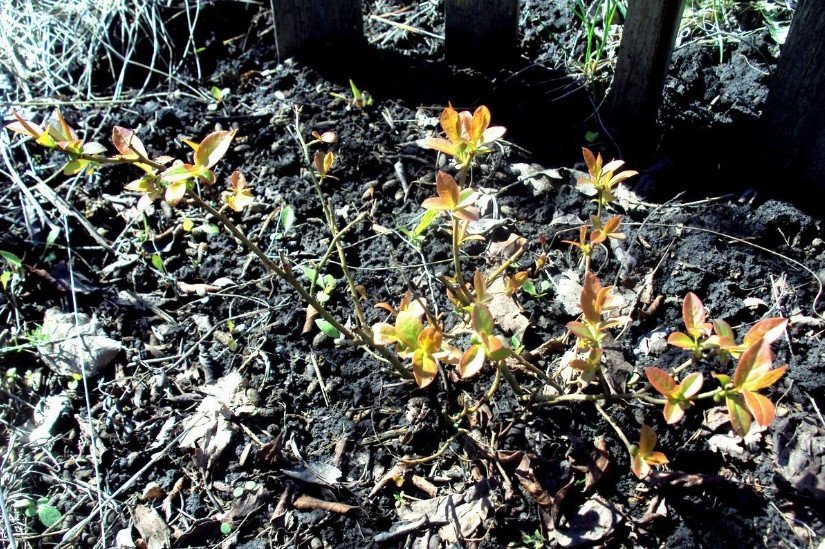
In warmer climates planted tall varieties that take root well and bear fruit:
- ‘Bluecrop‘;
- ‘Patriot‘;
- ‘Bluejay‘;
- ‘Spartan’ and others.
But in this case it is still desirable to plant varieties of early or medium maturity. They are quite easy to adapt to grow in new conditions, withstand a significant decrease in temperature and after a few years give a good harvest.
Early varieties, such as:
- ‘Duke‘;
- ‘Weymouth‘;
- ‘June‘;
- ‘Bluegold‘;
- ‘Early Blue‘
begin to keep up in the middle of July, yielding, but most do not tolerate transportation and storage.
Mid-ripening varieties, such as:
- ‘Bluecrop‘;
- ‘Blueray‘;
- ‘Berkeley‘;
- ‘Elizabeth‘;
- ‘Bluejay‘
begin to ripen by early August, high yields, berries are large, well transported.
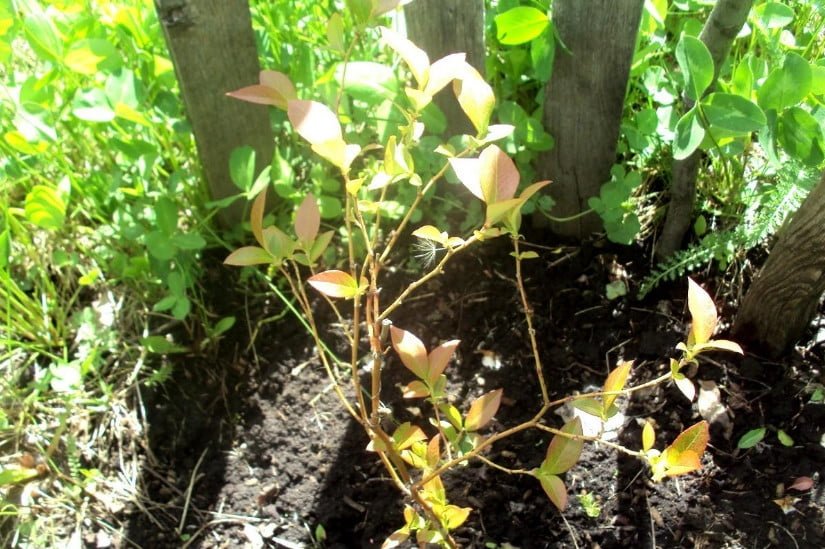
Late maturing varieties such as:
- ‘Spartan‘;
- ‘Jersey‘;
- ‘Coville‘;
- ‘Herbert‘;
- ‘Elliot‘
medium-or high-yield, smaller berries, well tolerated transportation.
I tried to tell you as much as possible about growing blueberries. If something is unclear, something causes doubts-ask, I will answer all. I will be glad if you share your experience of growing this wonderful berry.
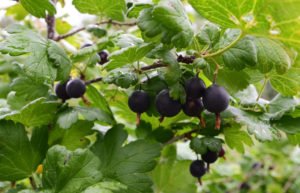



Leave a Reply